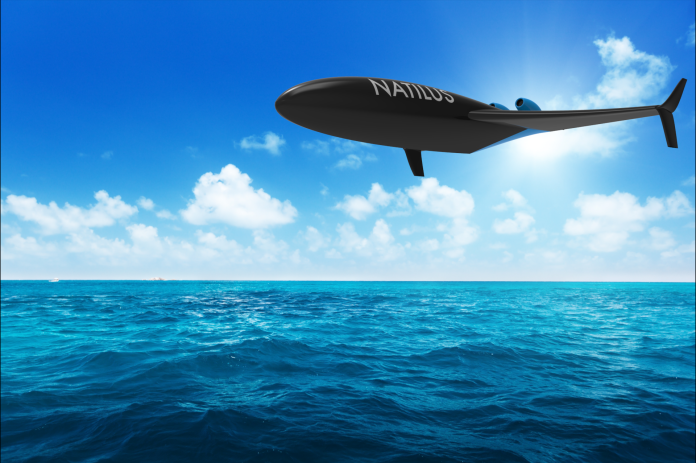

A seaplane cargo drone with a 100 tonne capacity able to use sea port facilities and carry ocean freight containers and unit load devices is being proposed by US company, Natilus Drones.
Claiming double digit savings in operational costs and for freight forwarders, Natilus is aiming at what it says is an existing $100 billion a year Trans-Pacific airfreight market that will grow significantly due to e-commerce. Expecting to operate their seaplane cargo drone, called Natilus, but pronounced Nautilus, with an initial Trans-Pacific fleet of up to five, the company’s founders have been speaking to freight forwarders.
The pitch to forwarders has included paying the cargo insurance for the first year, 20 per cent profit margin increase and to have one partner per route. “E-commerce is booming and we’ll expect that to improve and get larger. We are hedging on e-commerce will keep growing. In the US it’s everything. And 30 per cent of [US company] sales are international,” Natilus chief executive officer and chief aerodynamicist, Aleksey Matyushev tells Air Cargo Week.
The Nautilus seaplane, which is made of carbon fibre and fibreglass composites, has an estimated $25 million production cost, compared to a Being 777 Freighter which has a Boeing list price of about $300 million. Natilus’ lower production cost is because it has fewer onboard systems as it has no pilots. Natilus would fly at 20,000 feet (6,096 metres), about 15,000 feet below passenger air traffic, after using up to 6,000 feet to take-off in a sea state swell of up to eight feet. It would fly across the Pacific in 30 hours. Natilus would be towed from a sea port to its take-off point outside of territorial waters, which often end at about 19 kilometres from a nation’s shoreline.
After landing a tug would tow it to the sea port. The Natilus will use a Pratt&Whitney turbojet engine which the cargo drone firm says it knows is in development, but declines to identify.
The company intends to build a scale model prototype with a six metre wing span to test the autopilot and water take-off and landing. The Boeing 747-400 wingspan is 64.4 metres. The plan is that the scale model will be flying in 18 months and a full scale commercial Natilus will be flying three years after that.










